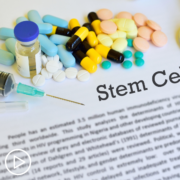What Factors Shape Myeloma Treatment Options After Relapse?
What Factors Shape Myeloma Treatment Options After Relapse? from Patient Empowerment Network on Vimeo.
What myeloma treatment options are there for patients who relapse? Expert Dr. Sikander Ailawadhi from Mayo Clinic explains patient factors that must be considered in treatment options and how treatment options may be impacted.
Download Guide | Descargar Guía
See More from START HERE Myeloma
Related Programs:

|

|

|
Transcript:
Lisa Hatfield:
For those who relapse for the first time, what are the best treatment options?
Dr. Sikander Ailawadhi:
I think that’s a very important, and I can imagine a scary situation. So somebody who relapses in general, not just even the first time, the factors that are taken into account for deciding what treatment they should get, there are broadly three categories of factors. Patient factors deciding what’s the age, what’s the other comorbidities, are they diabetic, are they heart disease, kidney dysfunction, because those things go into the decision of what may or may not be given. So patient factors.
Also importantly, how close are you to your treatment center? Can you come in for infusional or injection drugs time? And again, can you prefer or do you prefer oral drugs only? Et cetera. Those things become important. Then that…so that’s patient factors and disease factors. How fast is the progression? Is it high-risk disease, standard risk disease? Is it biochemical progression like the previous person asked?
Or is it actually a clinical progression in which there’s kidney dysfunction or anemia or bone disease? Because the choices and the urgency of treatment may change. So patient factors, disease factors, and then drug factors are the third class or third category, which is what have you had before? How long have you been on it? Are you on maintenance or not? Is your disease considered refractory to a certain agent, meaning resistant to a certain agent?
Typically, if you were on a treatment and your disease is progressing, that same drug may not be used again. And there are some times that we will reuse a drug, but generally not. We can use the same class, but we may not typically use the same drug. So I think the choice of treatment depends on all of those factors put in. And then we come up with one or two or three regimens and we discuss them with patients. And, of course, being an academic, physician, I must say there is always, you must always seek out good clinical trials if they’re available to you. That is the way our field moves forward.



















